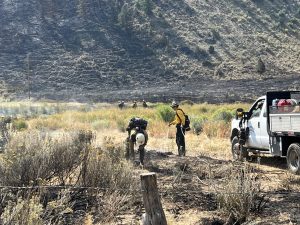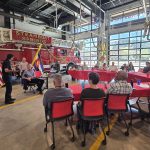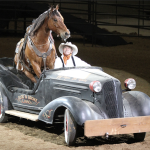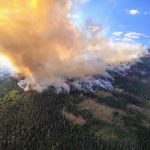Post-disaster guidebook provided for wildfire-impacted residents
County-specific toolkit available for property owners
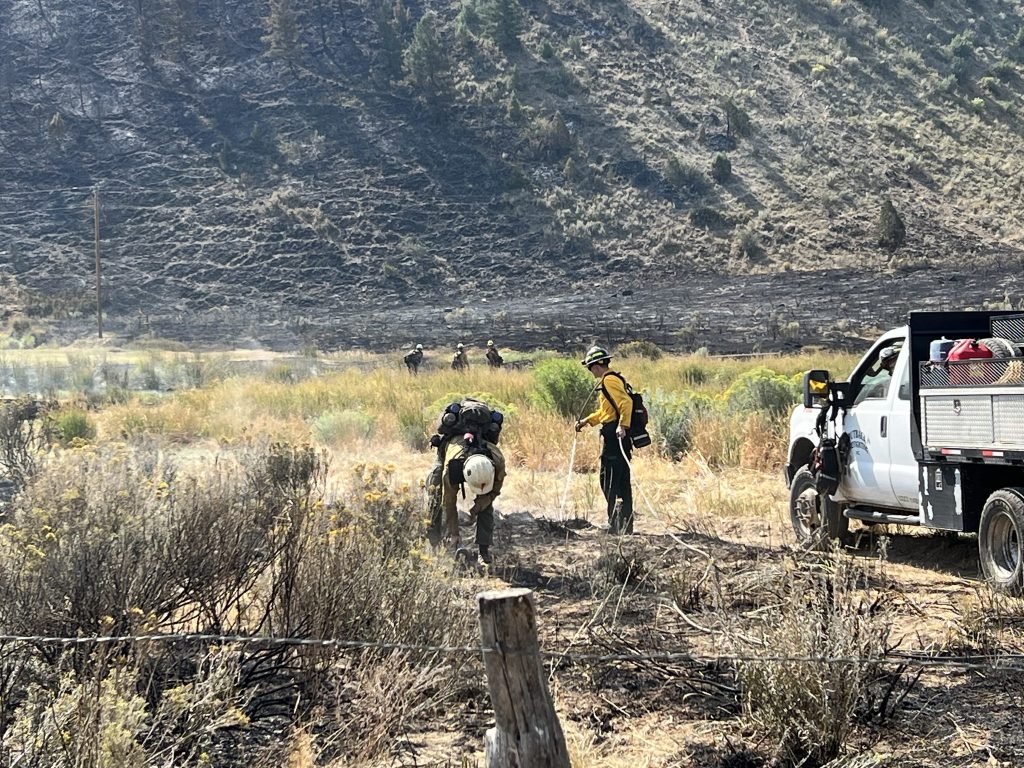
Elk and Lee Fire InciWeb/Courtesy photo
The well-connected community educators at Colorado State University Extension have stepped up to create an “After the Disaster Guidebook” for 14 Colorado counties impacted by wildfires.
The recovery guidebook for Rio Blanco County was released earlier this month and is online at RBC.us/695/Post-Fire-Recovery-Resources. County-specific editions for Moffat and Routt counties will be available later this week.
“There’s already a comprehensive amount of information gathered for folks to make information more accessible,” said Katie Maloney, family and consumer science specialist for Routt County CSU Extension. “It just covers so many different topics that may not be top of mind for someone who recently has gone through a disaster.”
Maloney said guidebook information ranges from safety measures for property owners after wildfire, to ways to mitigate post-fire flooding, to evaluation of food and water safety after a fire.
CSU Western Region Director Darrin Parmenter said the Extension service also has county-specific guidebooks available to help landowners in Archuleta, Boulder, Eagle, Gunnison, Jefferson, Kiowa, Larimer, Mesa, Montrose, San Miguel and Summit counties.
As the Routt County guidebook is being finalized this week, property owners currently can reach out to the CSU Extension office in Steamboat Springs at 970-879-0825 with questions. The first guidebook, focused on providing a “toolkit for landowners impacted by wildfire,” was created in December 2021 for Boulder County after the Marshall Fire, Parmenter said.
The guidebook begins with immediate safety, communication, and mental health and self-care. The digital handbook then provides information for returning to wildfire-impacted properties on such issues as insurance, finance, important documents and clean-up; along with debris management, caring for animals, landscape recovery and post-fire flooding.
“It’s difficult to put into words the profoundly life-changing experience of surviving a wildfire,” according to the CSU Extension statement. “No two recovery journeys are the same, and each present unique circumstances. CSU Extension has gathered a variety of resources based on insights from subject matter experts and survivors to provide guidance on the road to recovery.”
“Disasters typically bring about feelings such as fear, shock, disbelief, grief, anger and feelings of guilt. Memory loss, anxiety, depression and flashbacks are all common occurrences. Many people have trouble concentrating, thinking clearly or sleeping,” the guidebook notes.
The CSU guidebook advises landowners to maintain a recovery notebook to record details and stay organized when making phone calls for information and assistance. The book “Surviving Wildfire” by Linda Masterson is another recommended resource.
The guidebook advice for personal self-care includes:
- “It’s OK to not be OK. Allow yourself to recognize your own feelings and be patient with the changes in your emotional state.”
- “Rest and sleep. Sleep deprivation can interfere with your ability to function and make decisions. Avoid working on your phone or watching the news right before bed.”
- “Arrange professional counseling. The Red Cross, Colorado 211 or your primary care doctor can connect you and your family to professionals who specialize in disaster-related stress.”
- “Engage in healthy behaviors. Eating well and getting some exercise will help you feel better and make your brain work better. Also limit or avoid alcohol, drugs and marijuana as it can interfere with your sleep and ability to cope.”
- “Stay connected. Social support is crucial to disaster recovery.”
- “Establish or reestablish routines. This can include eating meals at set times, sleeping and waking on a set schedule or sticking to a workout routine.”
- “Monitor and limit media exposure. During disasters, the non-stop TV, radio, internet and social media coverage can make things worse.”
When returning to a property, dangers and hazards can remain such as structural damage, unstable roads, utility damage, weakened trees, hot spots, ash pits, flash floods and runoff or wildlife predators that have moved into the area, according to the guidebook. The experts advise to wait to bring back pets and livestock from evacuation locations until the extent of damage is known and hazards such as downed fences are identified.
“Regardless of the extent of the fire damage to your home or land, returning after the fire will be an emotional experience,” according to the guidebook.
The first steps to recovery start with assessing and documenting losses. Before moving things around, people should take several photos from multiple angles or videos with narration to describe the damage and previous features of a home, personal property and land. This documentation, along with saving receipts for restoration and recovery projects, will help with insurance claims or applications for assistance programs.
Residents should become familiar with safe clean-up, disposal and debris-management practices. Ash deposited on indoor and outdoor surfaces during and after wildfires can contain trace amounts of cancer-causing chemicals. The ash from trees and vegetation is typically non-toxic, but ash from construction materials can be contaminated with mercury, asbestos and lead.
Before using a private well, the well should be inspected for damage or water contamination.
Inhaled ash can induce nasal and throat irritation and coughing, and airborne ash can trigger asthma episodes. During clean-up, experts advise keeping children, pets and livestock out of burn debris or ash sites. When cleaning ash, people should wear a well-fitting N-95 mask, gloves, long-sleeved shirt and long pants to avoid skin contact.
If a human or pet comes into contact with ash, it should be washed off as quickly as possible. Wash clothing used during clean-up separate from other clothing. As much as possible, avoid stirring or shifting ash. Before lightly sweeping, mist indoor and outdoor hard surfaces with water to keep down dust and follow up with wet mopping or a damp cloth. Utilize HEPA filter vacuums instead of shop vacuums or other non-HEPA vacuums.
Food, beverages or medications exposed to burn debris or ash should not be consumed. Factory sealed canned and packaged material can be washed and used if it has not been exposed to heat. For a vegetable garden or fruit trees, thoroughly wash produce before eating. Clean all utensils and dishware before use by washing in a strong detergent solution and then soaking in a bleach solution of one teaspoon of bleach per quart of water for 15 minutes.
The guidebook lists resources for landscape recovery, especially with immediate concerns related to stabilization of soils to help prevent or mitigate flooding, erosion and mudslides.
“Wildfires have increased the risk of flooding in many areas of Colorado in recent years,” according to the guidebook. “Burned landscape is unable to absorb rain as effectively as it did before the fire … Flooding is most common during the summer and early fall, when thunderstorms develop during the monsoon season.”
To reach Suzie Romig, call 970-871-4205 or email sromig@SteamboatPilot.com.

Support Local Journalism

Support Local Journalism
Readers around Steamboat and Routt County make the Steamboat Pilot & Today’s work possible. Your financial contribution supports our efforts to deliver quality, locally relevant journalism.
Now more than ever, your support is critical to help us keep our community informed about the evolving coronavirus pandemic and the impact it is having locally. Every contribution, however large or small, will make a difference.
Each donation will be used exclusively for the development and creation of increased news coverage.

